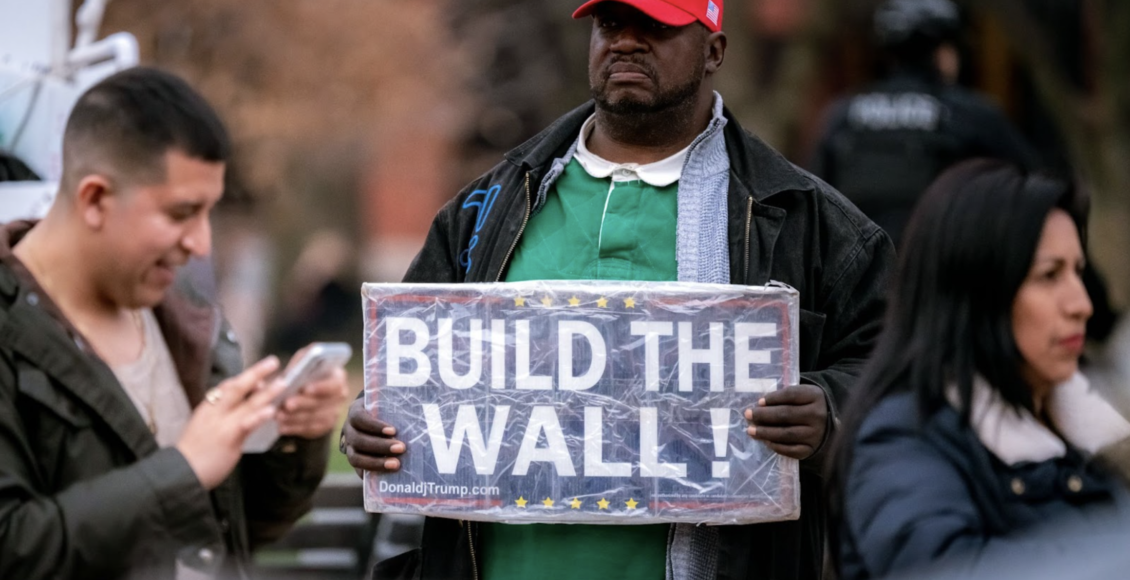Immigration Takes Centre Stage in U.S. Presidential Election

Viewers of the September 10 presidential debate might remember when Donald Trump falsely claimed that Haitian immigrants in Ohio were abducting people’s pets to eat them. This shift to more radical and dangerous rhetoric reflects a move toward a more restrictive stance on immigration across the American political spectrum.
During his presidency, Trump pursued strict immigration policies. He signed an executive order to limit travellers from seven largely Muslim countries, spent an estimated $15 billion USD on a physical border wall with Mexico, and implemented the child separation policy, taking children away from their caregivers who crossed the border. Trump’s 2024 agenda favours even more extreme anti-immigration policies than that of his previous term. He is not only planning to restore all of his old policies, but he is also planning on implementing immediate mass deportations, extending travel restrictions into the United States, and constraining birthright citizenship to only children born to parents with legal status in United States.. He has floated the idea of deporting international students who participated in pro-Palestinian protests.
At the southern border, he plans to continue building the wall and to open detention centres where unauthorized migrants would be held before being deported. Additionally, Trump will try to overturn the Flores settlement, which prohibits the federal government from detaining illegal migrant children. His agenda also involves the relocation of troops to the border and the intensification of Immigration and Customs Enforcement’s deportation procedures.
On the other side of the aisle, Harris and the Democrats have also supported more robust border security. Harris has called for an “earned pathway to citizenship” and immigration reform. She also intends to pass Biden’s bipartisan border deal that failed to pass Congress in February and May 2024. The bill would have allowed the president to close the border to asylum seekers if illegal crossings reached an average of 4,000 per week. It would have also reduced the number of asylum seekers who receive parole, increased funds for border patrol agents, and sped up the deportation and detention processes.
This shift reflects the growing belief among Americans that immigration is a threat to the United States: only 27 per cent of Americans approve of Biden’s border policy, and some politicians have used the word “crisis” to describe illegal immigration in the southern border. Migrants are frequently blamed for the drug crisis, crime, stealing jobs from US citizens, and driving up housing prices.
However, a closer look at the effects of immigration indicates that the most common fears surrounding immigration are unfounded. Many economists believe that immigration played a large role in the United States’ economic recovery after the pandemic by contributing to labour force growth.
Economists also argue that, instead of stealing jobs from US-born citizens, immigrants usually fill in the labour shortage gaps. In Ohio and Pennsylvania, immigrants have already filled in the gaps in the shortage of nurses and doctors: one in four physicians there is now an immigrant.
The rise in housing prices is also probably not due to the increase in immigration. Prices began to rise in 2021, while immigration really surged in 2022 and 2023. Instead, the rising cost of rent is likely related to an overall shortage in housing. However, some economists have argued that “the marginal immigrant increases demand more than he increases supply,” leading to higher housing costs.
Also, while the fentanyl crisis is often blamed on immigrants, 93 per cent of the fentanyl in the United States is brought in through legal border crossings, and the large majority of smugglers are US citizens.
Immigration remains a top policy priority for Americans. And whether Trump or Harris gets elected on November 5, Americans can expect a move toward more restrictive immigration policy.
Edited by Helena Kennedy
Featured Image: “Build the Wall!”, by John Brighenti, published on March 5, 2020, is licensed by CC 2.0.
